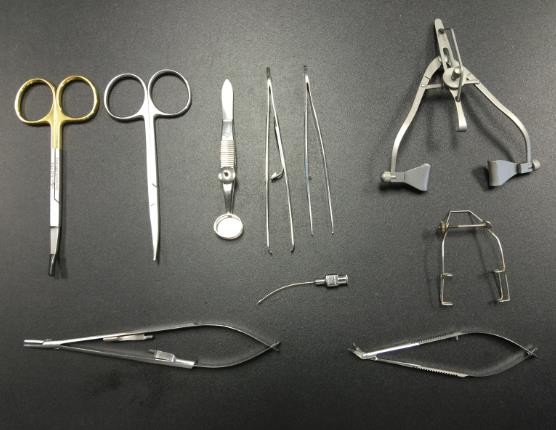Sterilization is the unsung hero of healthcare. By ensuring that surgical instruments are free of harmful pathogens, sterilization keeps patients and healthcare workers safe and helps prevent healthcare-associated infections. In this guide, we’ll explore the methods, technologies, and processes used to keep surgical instruments ready for safe use, making sterile instruments one of the foundational pillars of modern medicine.
What Does Decontamination and Sterilization Mean?
Let’s start with the basics. Decontamination is the initial process where contaminants, like visible soil or organic matter, are removed from surgical instruments, typically through physical or chemical means. Sterilization is the next step, aiming to destroy all forms of microbial life, including the most resistant bacteria and spores, ensuring the instruments are entirely pathogen-free.
In medical settings, decontamination and sterilization go hand-in-hand. While decontamination removes immediate contaminants, sterilization ensures a complete absence of infectious agents.
Why Is Sterilizing Surgical Instruments Crucial?
The stakes are high when it comes to patient safety, and unsterilized instruments can introduce harmful pathogens into a patient’s body, causing infections, surgical complications, and even serious healthcare-associated infections (HAIs). Effective sterilization:
- Prevents Infections: Surgical instruments touch open wounds, organs, and bodily fluids, which means any microbial presence can be highly risky.
- Meets Healthcare Standards: Compliance with healthcare regulations and standards mandates rigorous sterilization protocols.
- Protects Healthcare Staff: Not only patients but also staff are safer when using properly sterilized equipment.
Top Methods for Sterilizing Surgical Instruments
There are multiple methods to sterilize surgical instruments, each suited to different types of materials and settings. Here’s an overview of the main methods in use today, from steam-based to chemical solutions.
Autoclaving (Steam Sterilization): The Gold Standard
Autoclaving is the most commonly used sterilization method in hospitals worldwide. This method uses high-pressure saturated steam at temperatures between 121-134°C to kill all forms of microbial life, including spores. Autoclaves are highly reliable, capable of processing most surgical instruments effectively and efficiently.
How Autoclaving Works: The autoclave operates by pumping steam under high pressure, which penetrates deep into each instrument, killing pathogens by denaturing proteins. Instruments are kept in the steam for a specific amount of time to ensure complete sterilization.
Pros:
- Quick and highly effective.
- Ideal for heat-resistant instruments.
- Regarded as the most reliable method.
Cons:
- Not suitable for heat-sensitive or moisture-sensitive instruments.
- Requires training to operate and maintain.
Dry Heat Sterilization: A Reliable Alternative
Dry heat sterilization uses high temperatures, typically between 160-180°C, to sterilize instruments. Unlike autoclaving, which relies on moist heat, dry heat sterilization uses convection to transfer heat directly to the instruments.
When to Use Dry Heat: Dry heat is ideal for instruments that can tolerate high temperatures but are sensitive to moisture. For example, scalpels and glass syringes, which may rust in moist environments, benefit from dry heat.
Advantages:
- No moisture, reducing rust risk.
- Suitable for some plastics and oils that cannot be autoclaved.
Disadvantages:
- Takes longer than autoclaving.
- Only works for instruments that can withstand high, dry heat.
Ethylene Oxide (ETO) Sterilization for Sensitive Instruments
For instruments that cannot handle the high temperatures or moisture of an autoclave, ethylene oxide (ETO) gas is an effective alternative. ETO sterilization uses a colorless, toxic gas that kills all microorganisms, including bacteria, fungi, and viruses, through a chemical reaction.
Benefits:
- Works at low temperatures, making it ideal for delicate materials.
- Suitable for electronic components and other complex equipment.
Safety Considerations: ETO is toxic and requires thorough aeration after processing to eliminate any harmful residues. This process can take longer due to the need for aeration, but it’s crucial for patient and staff safety.
Hydrogen Peroxide Plasma: The Modern Low-Temperature Solution
Hydrogen peroxide plasma sterilization is a low-temperature method that combines vaporized hydrogen peroxide and plasma to sterilize equipment. This process is especially useful for items sensitive to heat and moisture, providing a fast and residue-free solution.
Pros of Hydrogen Peroxide Plasma:
- Fast cycle times, usually under an hour.
- Leaves no toxic residue, making it safe and environmentally friendly.
Cons:
- Limited by the types of items that can be sterilized (e.g., cannot handle heavily soiled items).
- High initial equipment cost.
Chemical Sterilization: For Delicate, Heat-Sensitive Items
Chemical sterilization, also known as “cold sterilization,” uses liquid chemical solutions to eliminate microorganisms on heat-sensitive tools. Commonly used chemicals include glutaraldehyde and peracetic acid.
Types of Chemical Sterilants:
- Glutaraldehyde: An effective disinfectant but requires rinsing after use.
- Peracetic Acid: Effective for sensitive instruments but has limited compatibility with some materials.
Limitations:
- Some chemicals can leave a residue that requires careful rinsing.
- The process can be slower and may not penetrate surfaces as effectively as other methods.
Choosing the Right Sterilization Method
Choosing the right sterilization method depends on several factors:
- Material: Instruments that are heat-sensitive may require ETO or hydrogen peroxide plasma sterilization.
- Time Constraints: Autoclaving offers rapid sterilization for heat-stable instruments.
- Instrument Use: Frequently used instruments may require fast-turnaround methods, like autoclaving, to keep them readily available.
Pre-Sterilization Cleaning
Before sterilization, it’s critical to clean all instruments thoroughly to remove visible debris. Pre-cleaning steps often involve scrubbing or ultrasonic cleaning to remove organic matter, which could otherwise inhibit the sterilization process.
Post-Sterilization Storage and Handling
Once sterilized, instruments must be stored in a sterile environment to prevent recontamination. Instruments should be sealed in sterilization pouches or containers and kept in a clean, dry area until use.
Quality Control in Sterilization
To ensure sterilization effectiveness, healthcare facilities use quality control indicators, including:
- Biological Indicators: Measure sterilization effectiveness by testing for microbial spore growth.
- Chemical Indicators: Strips that change color to indicate exposure to sterilization conditions.
Routine quality checks ensure that all instruments are consistently sterile and safe.
Conclusion
Sterilization is the backbone of safe healthcare practices, ensuring that surgical instruments remain free from harmful pathogens. By understanding and applying the most appropriate sterilization methods—whether through autoclaving, ETO gas, or chemical sterilants—healthcare providers can maintain high standards of safety and care for every patient.









